Mike Wec was having a tough morning.
The Massachusetts marsh he was hunting on Dec. 15 had frozen over despite the wind, and breaking 75 yards of ice just so he could paddle to his spot earned him sweat-soaked layers and a new leak in his waders. Wec had just enough time to throw out his decoys — mallards to the right, black ducks on the left — and get settled.
At legal light, the 37-year-old noticed a few ducks in the distance and gave a couple quacks. Three birds turned his way, then split at his greeting call, with a pair of mallards breaking right and the third committing.
“It looked like a hen mallard or a hen black duck, and her belly was tannish,” says Wec, who usually expects a mix of mallards, black ducks, and a few geese that time of year. “She cupped her wings and came into the black duck decoys.”
Related: Migrating Mallard Clocked at 103 MPH, Breaking Recent Speed Record
He shot once and dropped the duck on the water. Confident it wasn’t going anywhere, he waited and killed the next single that came in, a drake black duck. Then he got into his kayak.
“I paddled about 20 yards past the first duck and glanced at it and I’m like ‘Wow that is a light colored duck.’ It flew like a mallard and looked like a mallard or a black duck, so I had a feeling maybe it was a farm-duck mixed mallard. I picked up the black duck and came back and picked up the [white] duck.”
Wec went on to shoot a greenhead and a woodie — another surprise given the lateness of the season. Finally, he shot a banded greenhead and called it a morning, just one bird short of his limit.
“As I’m sitting there,” says Wec, “I’m also thinking, ‘What do I have here and I am I legal?’”
Wec put the banded drake and what he thought of as the “blond mallard” on the passenger seat and called his wife, Ashley Wec.
“I knew I had something special and I knew I had to wrap it and put it in the freezer,” says Wec. “I‘m like, ‘I don’t know what this is, and I’ve been told to mount so many birds before and I haven’t. This is the bird I’m gonna mount.’ So she’s like, ‘Well can’t they DNA test it?’ and I’m like, ‘I doubt it.’”
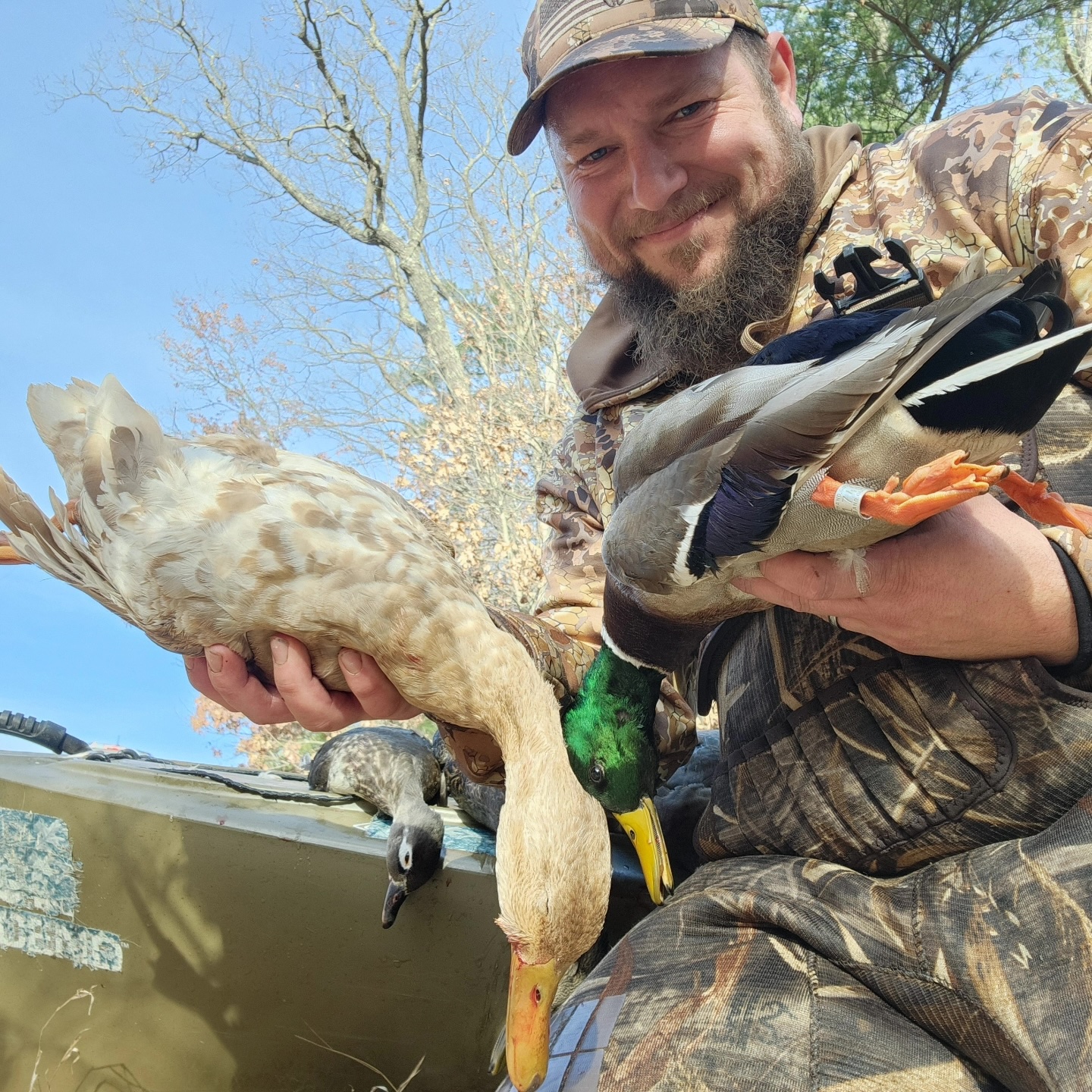
Undeterred, Ashley performed a quick Google search and turned up the University of Texas at El Paso’s duckDNA project, a new pilot program for 2023 designed to collect genetic data on wild waterfowl, particularly to study the Westward spread of game-farm mallard genes in wild duck populations.
So Wec reached out and although the program wasn’t accepting additional samples at the time, the photos of the blonde duck were intriguing enough that his taxidermist received a vial for collecting a tissue sample from the tip of the duck’s tongue.
Now, about five months later, Wec has received the results of the DNA test. The white bird was a hen, and 100 percent American black duck. In other words, there was no trace of game-farm mallard or even lineage from old-world ducks introduced from Europe years ago. According to the program and its partner, Ducks Unlimited, this is the first verified instance of a leucistic, fully wild American black duck.
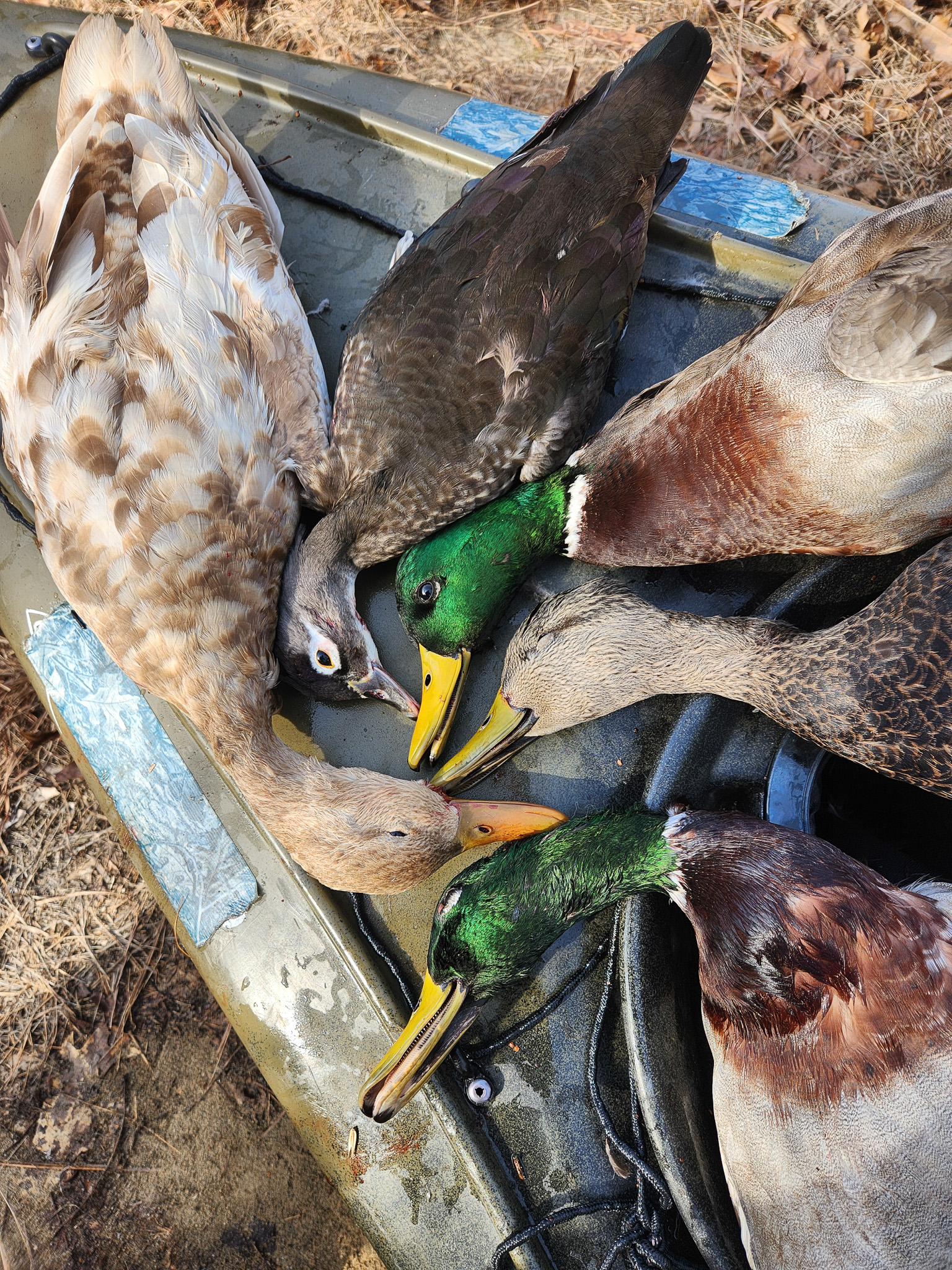
“This is a huge showcase of what duckDNA provides to hunters and scientists in cooperation at a level we’ve never had before,” Dr. Phil Lavretsky, who leads duckDNA, told DU in a statement. “No more assumptions and biases, there is no hiding DNA.”
Leucism is an inherited trait that results in loss of pigmentation. In birds this can range from just a few white feathers to all-white plumage, according to DU, noting that leucistic ducks retain normal eye color and vision (unlike albino birds). Previously hunters and even researchers have only speculated that ducks with the appearance and coloration of Wec’s white duck were leucistic mallards or wild-domestic hybrids.
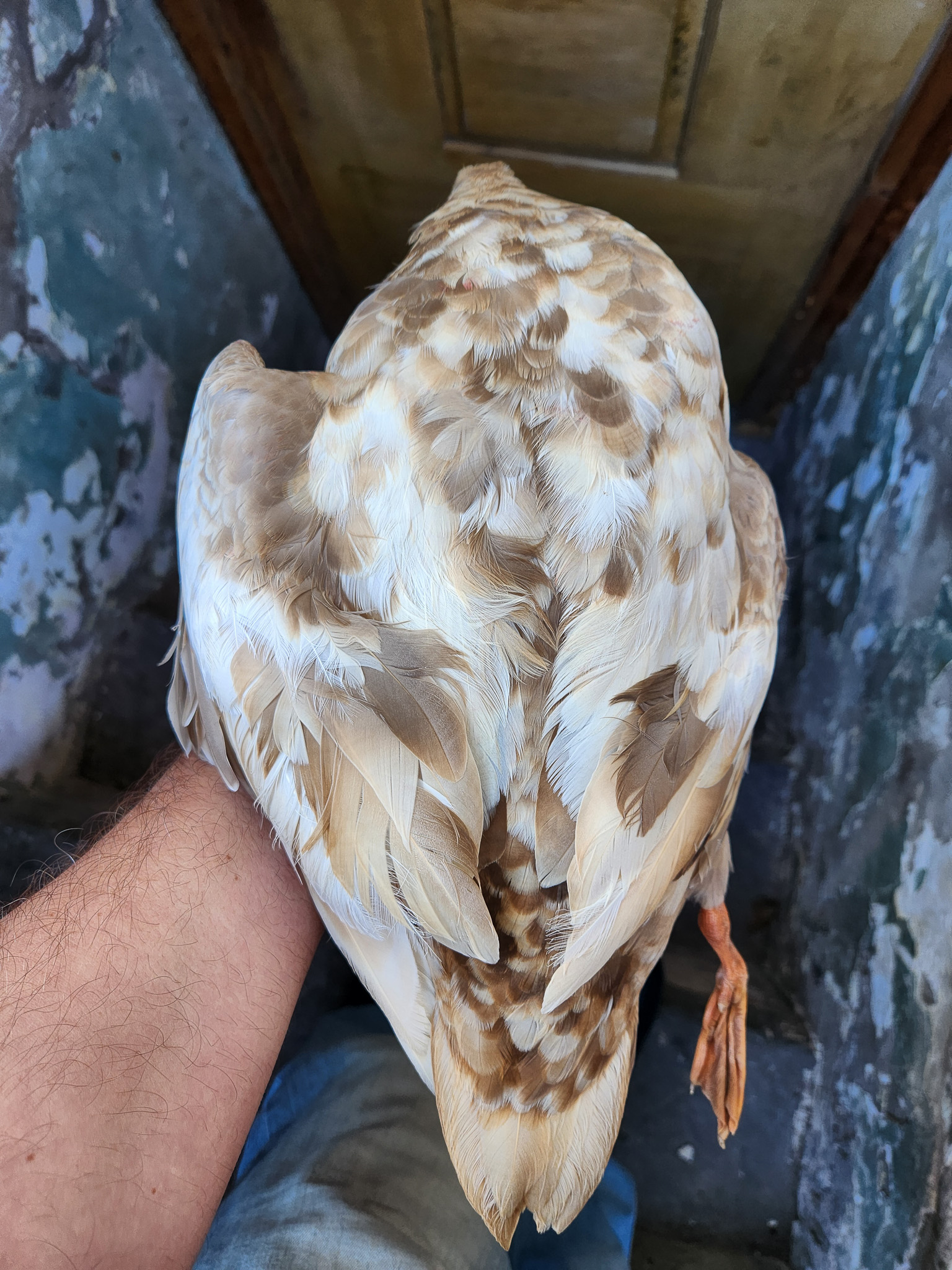
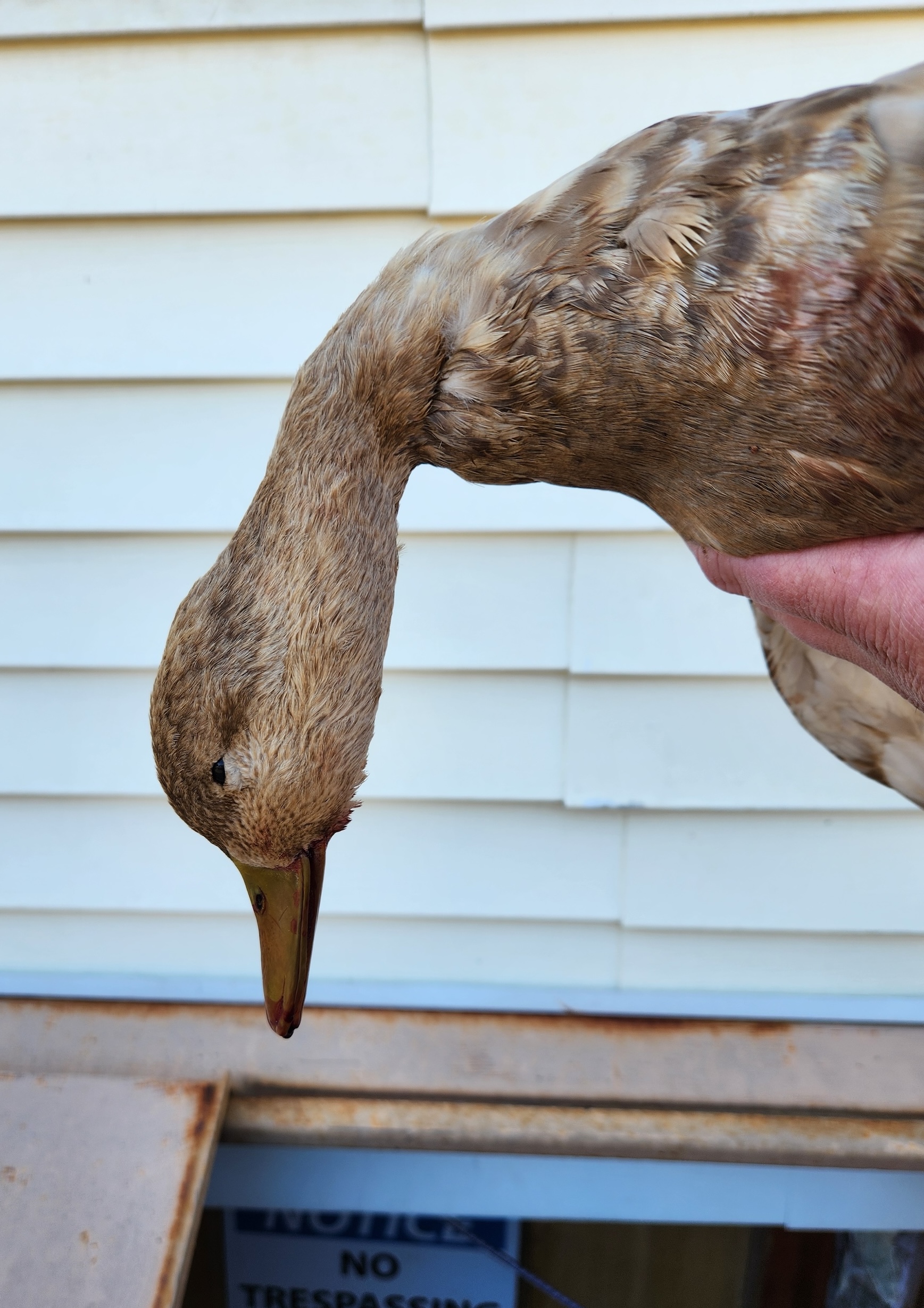
In its first season, duckDNA tested 721 genetic samples from ducks submitted by 309 hunters in 47 states. Analysis of those samples revealed 19 different hybrid combinations, including the following hybrids:
- Wild mallard x game-farm mallard
- Wild mallard x American black duck
- Wild mallard x American wigeon
- Wild mallard x gadwall (called Brewer’s ducks, these are the result of a male gadwall breeding a female mallard)
- Wild mallard x wood duck
- Florida mottled duck x wild mallard
- Muscovy x wild mallard
- Domestic goose x Canada goose
Researchers even identified three-species hybrids, which were the result of hybrid duck breeding with a species unrelated to either of its parent species. One triple hybrid included a duck with wild mallard, game-farm mallard, and Mexican duck genes. (You can find the full list of the 2023 to 2024 hybrids here.)
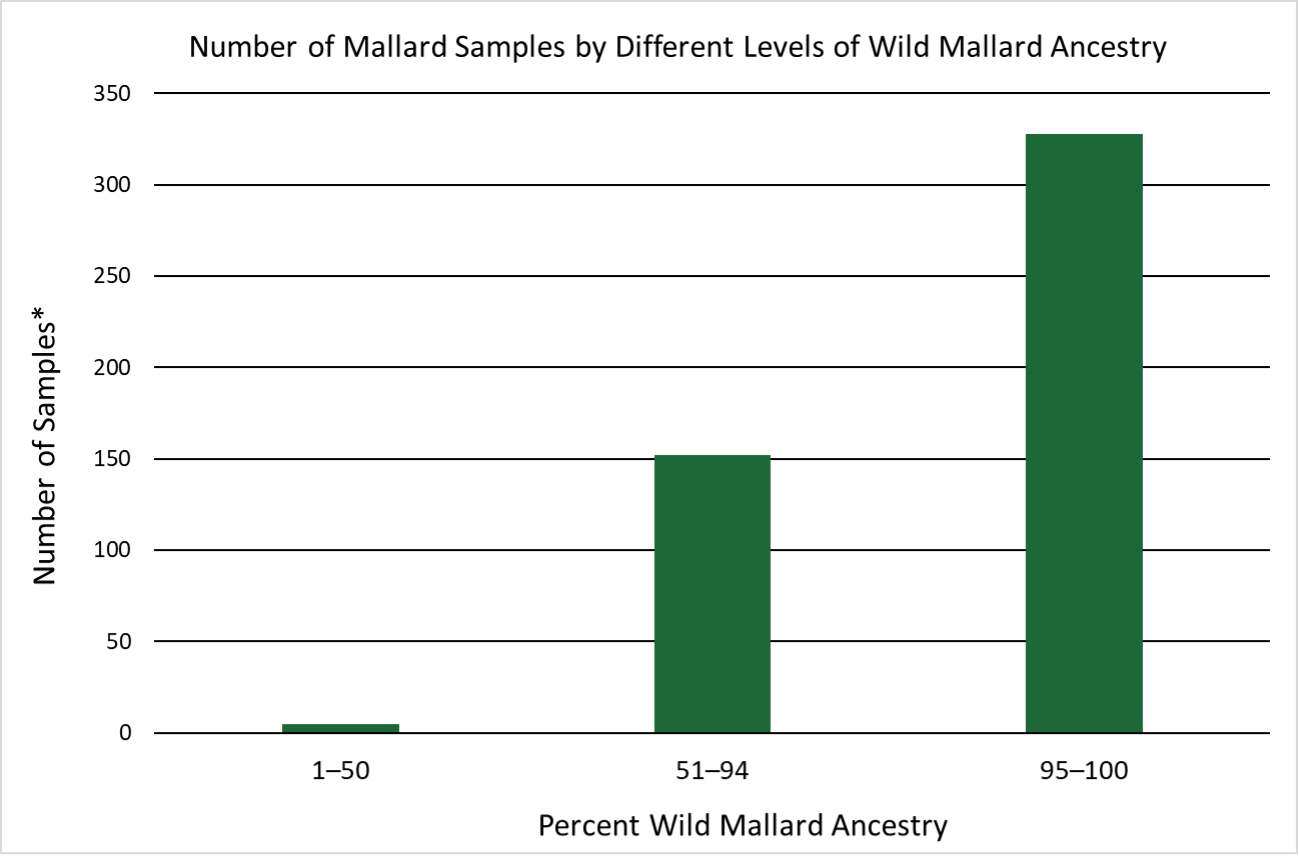
“Research from the University of Texas at El Paso has revealed that over a century of game-farm mallard releases in the Atlantic Flyway has led to widespread hybridization with wild mallards,” reports DU. “Other studies have uncovered potential differences in behavioral, physiological and ecological traits between game-farm hybrids and pure wild mallards, which may impact reproduction, movements and duck distributions across their range.”
Read Next: The Best Duck Calls, Tested and Reviewed
The program has proved so popular with hunters (4,200 applied last year) that duckDNA caps its submissions each season. Hunters who are interested in participating in the program this duck season should apply at duckDNA’s website.
